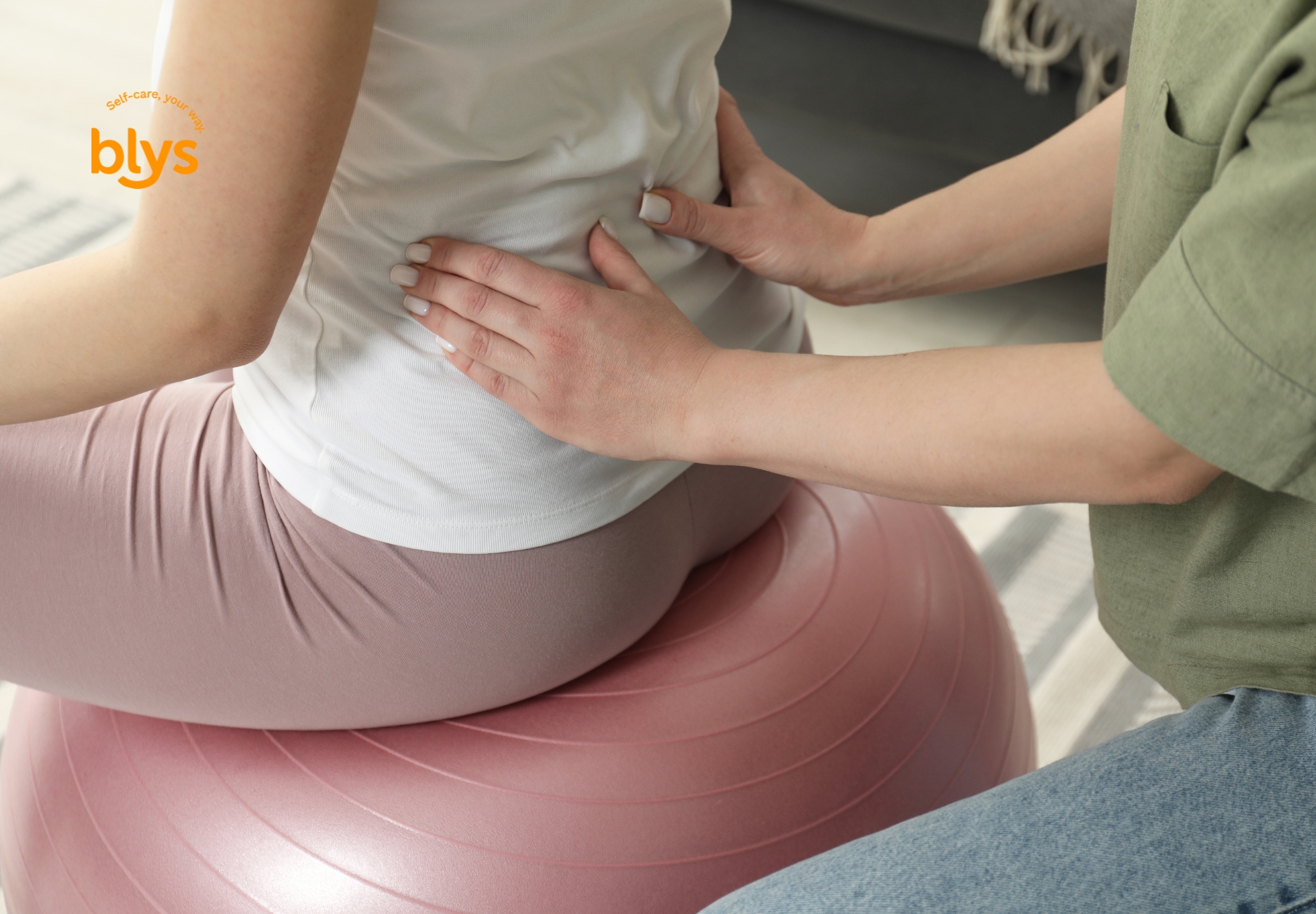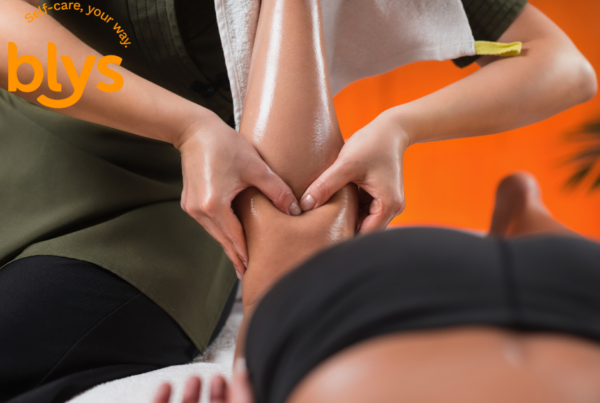
Welcome to your ultimate guide to kicking postpartum back pain to the curb! Hey new mum—yes, you, juggling diaper changes, feedings, and all that wonderful chaos—if your back’s been grumbling a bit more than usual, you’re definitely not alone. After carrying extra weight and navigating a brand-new world of motherhood, it’s only natural that your body might be sending you a few “uh-oh” signals. Ready to peel back the layers on what’s really going on with your amazing body and explore some playful, practical, and super gentle ways to help you bounce back?
The Science Behind Postpartum Back Pain
Your body goes through some pretty amazing transformations during pregnancy. Thanks to hormones like relaxin, your joints and ligaments get a bit extra loosened up to help prepare you for childbirth. While that’s super helpful when it’s time to deliver, it can leave your back feeling a little more on edge once your baby has arrived. With a shifted center of gravity, extra weight, and muscles that have been working overtime, it’s no wonder your spine might be throwing a tad too many blares unstable, your way. Seriously, your body is multi-tasking to the furthest extremes and it only makes sense that this could give you mixed signals on how you’re doing.
It can be a bit of a head-scratcher trying to figure out where exactly that pain is coming from. Just remember—this is all part of your body’s natural adjustment process, and knowing the why behind the discomfort is the first step to feeling better.
Common Causes and Risk Factors of Back Pain After Pregnancy
Now that we’ve uncovered the “why” behind your back pain, let’s dive deeper into the “what” is causing that pesky discomfort.
Postural Shifts
Pregnancy works its magic on your body, and one of its most noticeable tricks is changing your posture. With all that extra weight in your belly, your body naturally leans forward, which means your back muscles suddenly have to work much harder than before. Picture your back as a superhero suddenly saddled with an extra, heavy-duty backpack—it’s doing its best, but over time, the strain really adds up. This constant forward lean can lead to tightness, muscle fatigue, and even misalignment, making everyday activities feel more taxing than they once did.
Lifting and Baby Care
Every day, whether you’re cradling your baby, reaching for a stray toy, or managing a mountain of diaper bags, your back is put through a real workout. Carrying your little one close to your heart is precious, but it can also mean your muscles are continuously engaged in supporting that extra weight. Even seemingly harmless actions, like bending to pick up a toy or reaching for a bottle, can compound the strain if done repeatedly or without mindful technique. Over time, these little stresses build up, much like layers of wear on a favorite piece of clothing, until your back starts to feel the pressure.
Weakened Core Muscles
Your core is essentially the foundation that holds your entire body up, and it’s especially important for supporting your back. After pregnancy, your core muscles might not be as strong as they once were, leaving your back to pick up the slack.
It might help to think of your back like the foundation of a house (incase no one has told you yet, you practically are!). When that foundation is under extra pressure or isn’t as strong as it once was, it’s bound to show signs of wear. But don’t worry—there are plenty of ways to rebuild and strengthen that foundation! By focusing on proper posture, using mindful techniques when lifting, and gradually working on core strength, you can start to repair that foundation and ease the discomfort.
Safe Postpartum Exercises and Stretches
We get it—exercise might feel a little intimidating after all the changes your body’s gone through. But here’s the thing: the goal right now isn’t to jump into an intense workout routine. Instead, think of these exercises and stretches as a way to gently remind your body that it’s still strong, capable, and ready to heal.
Start with simple, postpartum-approved movements that ease you back into a routine. Gentle stretching is a great way to increase flexibility without putting too much strain on your body, and targeted exercises can work wonders in rebuilding strength in your back and core. Picture this: a slow, soothing morning routine, filled with stretches and movements that flow like a calming dance, reconnecting you with your body and the new life inside you.
Moves like pelvic tilts, modified bridges, and gentle twists are fantastic starting points. These exercises are designed to be kind to your body while working to strengthen key muscles that support your back. The best part? They help to realign and rebuild the muscles that are often weakened after pregnancy, giving you that much-needed relief.
- One of the simplest and most effective ways to start rebuilding your body after pregnancy is by strengthening your pelvic floor muscles with Kegels. These little exercises go a long way in improving bladder control, supporting your core, and promoting overall pelvic health.
- Find the Right Muscles: To identify your pelvic floor muscles, try stopping the flow of urine midstream. The muscles you use to do this are your pelvic floor muscles.
- Tighten and Hold: Once you’ve found the muscles, tighten them and hold for 10 seconds. Make sure you’re not holding your breath—breathe normally as you engage your pelvic floor.
- Relax and Repeat: After holding for 10 seconds, relax your muscles completely. Then, repeat the exercise. Aim to do this a few times throughout the day, every day.
- Walk around the neighborhood. You might not want to be seen out in the open hunched over like a croissant, but honestly, wear that smart watch and get walking. This is possibly the easiest way to get quick relief from your back pain.
- Swiss ball bird dog holds work–they might seem scary and tricky at first, but once you get the hold of it, you’ll want the exercise ball all for yourself, and leave your kids wondering why.
- Position Yourself on the Ball: Start by lying face down on the exercise ball, with your torso draped over it. Your body should form a straight line from head to toe, with your palms flat on the floor and your toes touching the ground for stability.
- Lift and Reach: While looking down at the floor, simultaneously lift your left foot and right arm, reaching them outward as far as you comfortably can. Hold this position for 1 to 2 seconds, focusing on maintaining your balance and engaging your back muscles.
- Return to Start: Slowly lower your left foot and right arm back to the starting position.
- Switch Sides: Now, switch it up—lift your right foot and left arm, repeating the movement on the opposite side.
- Alternate and Repeat: Continue alternating sides for a total of 20 repetitions, ensuring you keep your movements slow and controlled.
- If you think bird and dog are the only animals we’re gonna name, well, how about the cat and cow pose? Ever wondered how arched the cat can get—almost to the point where it feels like they don’t even have a backbone? We’re almost sure their flexibility gives them their nine lives in return. Get arching like a cat and relaxing your back muscles like a cow for a few minutes every day. It helps support back muscles and strengthen your core.
- Get on the floor (we assume you do have a soft mat) on all limbs. Your back should be flat, spine—in a neutral position, and look down at the floor. Place your wrists directly under your shoulders and knees under your hips. If this is too confusing, watch a few YouTube tutorials.
- Take a deep breath, and while exhaling slowly, curve your spine toward the ceiling like you’re making the rounded part of the question mark.
- Hold this position for a max of 2 seconds. Inhale, get your back arching, and lift your tailbone. Face towards the ceiling (or sky, wherever you are) as you relax your stomach to the cow position. Repeat for at least 5 times for each pose.
- Plank it out. The standard plank is a fantastic full-body move that works your core, strengthens your upper body, and even gives your glutes a little lift. It’s a great exercise to add to your routine once you’re feeling ready—just make sure you’ve had a vaginal delivery without complications before jumping into this one.
If you’re still building up strength after childbirth, no worries! You can always start on your knees and work your way up to a full plank as your body allows.
- Get into Position: Start by lying on your stomach with your forearms flat on the floor. Your elbows should be right under your shoulders, and your feet should be flexed with your toes touching the ground.
- Lift Up: Engage your glutes and core, and rise up onto your toes so that only your forearms and toes are touching the floor. Your body should form a straight line from your head to your heels.
- Tighten and Hold: As you hold the position, focus on contracting your deep abdominal muscles—imagine pulling your belly button toward your spine. Keep your buttocks and upper body tight, making sure to maintain a straight line from head to toe. Breathe normally, and hold for 30 seconds.
- Repeat: Lower yourself back down and rest for a moment. Then repeat the plank 1 to 2 times. As you get stronger, feel free to increase the hold time.
This is a simple yet powerful move to help rebuild your core strength after baby. Remember, it’s all about taking it slow and steady, and listening to your body. You’ve got this!
And don’t rush—every little bit of movement is a win! Even if you’re only able to do a few stretches or exercises at first, you’re already doing something wonderful for your body. It’s all about honoring your journey, progressing at your own pace, and giving yourself the space to heal. So, take a deep breath, ease into these moves, and remember: every stretch is a step toward feeling stronger and more supported! If you need some professional help, get an appointment with a qualified massage therapist on Blys.
Ergonomics and Daily Living Tips
It’s not just about what you do during exercise—your everyday habits play a big role in how your body feels, especially when it comes to easing back pain. Simple tweaks to your daily routine can make a world of difference and help your body recover without you even realizing it. Here are a few tips to incorporate into your life:
Mind Your Posture
When you’re feeding your baby—whether you’re breastfeeding or bottle-feeding—try to sit up straight. We know, you’ve probably spent hours feeding and cuddling, and your posture might not always be top of mind. But sitting tall, with your shoulders back, can reduce strain on your back and neck. Use a comfy chair with good back support and throw in a cushion to support your lower back if needed. Trust us, your back will thank you after those marathon feeding sessions!
Lift with Care
Let’s face it, picking up a newborn isn’t exactly light work. But you can make it easier on your back by remembering to bend at the knees, not the waist. Whether you’re scooping up your baby, grabbing that diaper bag, or even picking up toys off the floor, this small shift in technique can save your back from unnecessary strain. Think of it like lifting a heavy box—keeping your back straight and using your legs will protect your spine.
Create a Comfortable Environment
At home and at work, set up an ergonomic space that works for you. This doesn’t just apply to your desk—make sure your seating is supportive, whether you’re sitting to feed, rest, or work. Consider adding a lumbar pillow or cushion to support your lower back, and try to keep things at eye level to avoid slouching. A well-arranged, supportive environment will make it easier to get through the day with less pain and more comfort.
Think of these tips as your daily self-care rituals. You don’t have to overhaul everything at once—small adjustments to your routine can lead to significant improvements in how you feel. With just a little focus on posture, lifting, and your environment, you’ll be able to navigate your day with less strain and more ease. Your back will thank you!
Nutrition, Hydration, and Lifestyle Factors
You are what you eat!
What you eat, drink, and how you take care of yourself in your everyday life can have a huge impact on how quickly and comfortably you recover from postpartum back pain. While it may feel like your body’s been through the ringer, you’ve got a secret weapon: your lifestyle. Here’s how small changes in what you consume and how you care for yourself can make a big difference:
Eat Well, Heal Even Better
It’s no surprise that a balanced diet plays a huge role in your recovery. Your body needs all the vitamins, minerals, and nutrients it can get to heal after childbirth—and your muscles and tissues need support to recover from the stress of pregnancy and delivery. So, focus on a diet that includes plenty of fruits, veggies, lean proteins, and healthy fats. Foods rich in vitamin C, calcium, and magnesium are especially great for healing muscles and bones. And don’t forget about omega-3 fatty acids—they’re not just good for your heart but also for reducing inflammation and promoting overall recovery.
Hydrate Like You Mean It
Water isn’t just for quenching your thirst, or downing those muscle relaxants for your aching back—it’s a vital part of keeping your muscles and joints well-lubricated. After all, hydration helps to reduce stiffness and keep everything moving smoothly. Aim to drink plenty of water throughout the day, especially if you’re nursing. Staying hydrated can also help manage that tired feeling that comes with new motherhood, keeping your energy up while you’re busy caring for your little one.
Sleep and Stress Management
It’s no secret that sleep can be a challenge for new mums. But quality rest is essential for physical recovery. Try to carve out some extra sleep whenever you can—even a short nap can make a huge difference in your energy and mood. Along with sleep, managing stress is key to your overall recovery. Life as a new mum is filled with ups and downs, but a little “me-time” can go a long way. Whether it’s sipping a cup of tea, practicing deep breathing, or taking a few quiet moments to yourself, managing stress helps your body heal and supports your mental well-being.
So, while it may seem like there’s a lot to juggle with a new baby, making a few adjustments to your nutrition, hydration, and self-care routine can create a solid foundation for your physical recovery and overall well-being. It’s about treating yourself with the same love and care that you give to your little one!
Massaging Your Back Pain Away
When it comes to postpartum recovery, sometimes the best solutions aren’t found in a gym or a bottle of pills. Instead, alternative therapies and holistic approaches like massage and yoga offer gentle, yet powerful, ways to ease back pain while nurturing your body and mind. Here are a few options that can complement your recovery journey and provide some much-needed relief:
Pregnancy and Postpartum Massage
Massage is more than just a treat for your body—it’s a true lifesaver for new mums struggling with back pain. A professional massage, especially one tailored to the unique needs of pregnancy and postpartum recovery, can make a world of difference. These massages help release muscle tension, boost circulation, and ease discomfort. Many mums find that regular sessions can reduce stress and alleviate tightness, helping their bodies recover from the physical demands of pregnancy, childbirth, and caring for a newborn.
Plus, let’s face it: as a new mum, you’re probably in need of some serious relaxation! A good massage is an excellent way to rest and reset, taking the edge off the constant demands of motherhood. Lucky for you, Blys makes it ever so effortless by bringing the relaxation to wherever you are, whether at home or a hotel. You can simply book an appointment on the platform, and a qualified and vetted therapist in our network arrives at your door with everything you’ll possibly need. You just need to be there.
Yoga and Mindfulness
If you’re not about getting your muscles kneaded, gentle yoga and mindfulness practices are like a one-two punch for your mind and body. Yoga offers stretching and strengthening moves that can help release tight muscles, improve flexibility, and increase strength in a safe and gentle way. And mindfulness techniques—like breathing exercises and meditation—can help calm your mind, reducing the mental strain that often accompanies physical discomfort.
Imagine carving out a few quiet moments each day to focus on your breath and gently stretch your body on a yoga mat. Not only will you relieve back pain, but you’ll also feel more centered and grounded, helping you navigate the ups and downs of new motherhood with greater ease.
The beauty of alternative therapies is that they give you options to discover what works best for your body and lifestyle. Whether it’s the soothing relief of a massage or the peaceful focus of yoga, these holistic approaches are all about helping you listen to your body and take care of yourself in a way that feels good. And sometimes, something as simple as a relaxing massage can provide the break you need, recharging both your body and spirit.
So, if you’re looking for a way to manage postpartum back pain without feeling overwhelmed by more intense treatments, exploring these alternative therapies might be just what you need. Whether you dive into a restorative yoga session, enjoy a rejuvenating massage, or practice mindfulness, the key is finding what makes you feel good and supporting your body’s natural healing process.
You’re Not Alone In This!
Navigating the world of postpartum recovery can feel like a rollercoaster ride, but here’s the good news: you don’t have to face it alone. Armed with some solid knowledge about the science behind your back pain, practical exercise tips, ergonomic hacks, nutritional advice, and holistic therapies, you’ve got all the tools you need to start your recovery journey. Every small step you take—whether it’s a gentle stretch or getting a little more rest—is a victory toward a stronger, pain-free back.
Now, let’s be real: caring for your new baby is a full-time job, but it’s also time to give yourself a little TLC. Postpartum is the perfect moment to remind yourself that self-care isn’t selfish—it’s essential! So, take it slow, be patient, and celebrate the progress you’re making every day. With persistence and a sprinkle of self-love, relief is within reach.
Ready to start feeling better? Let us help you on your postpartum recovery journey! Book an appointment today and treat yourself to a soothing massage or wellness treatment designed with your needs in mind. You’ve earned it!
Here’s to you—a stronger, healthier, and more balanced version of yourself—one gentle step at a time.




